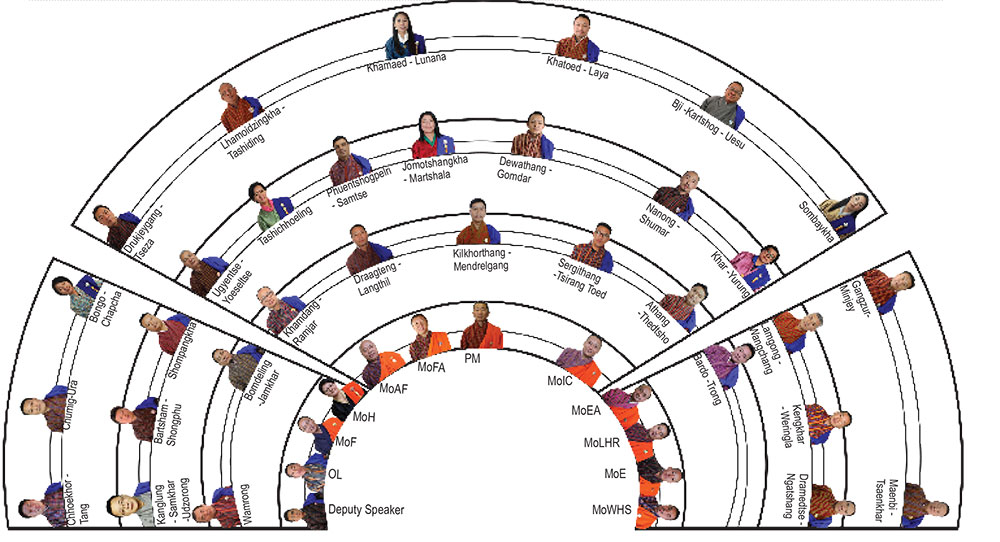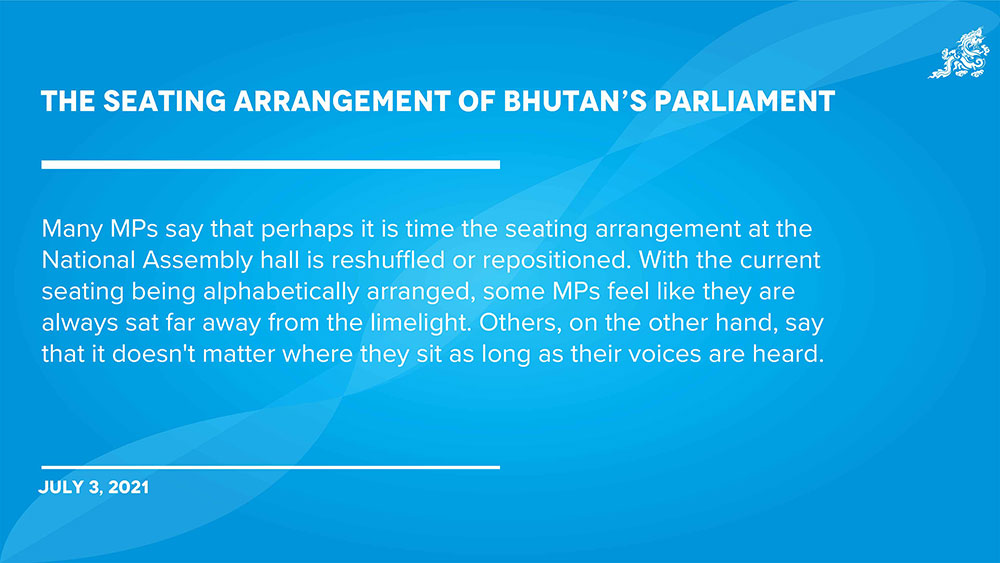Yangchen C Rinzin
Did you know that the National Assembly hall has a seating capacity of 104?
And the seating is alphabetically arranged—dzongkhag and constituency—from the last row of the hall’s door two from where Members of Parliaments (MP) enter?
The front row is reserved for the prime minister, opposition leader, ministers, and deputy speaker. This has been the arrangement since the first democratic election in 2008. This means only the members have changed, not the seats of most of the elected representatives.
The seating arrangement in the hall is in the shape of a semi-circle facing the Throne.
There are two lecterns inside the hall. The grand lectern, located in front of the Golden Throne, is used for the Prime Minister’s address on the State of the Nation and for visiting heads of the foreign state.
The lectern located at the right side of the Throne is for reading Druk Gyalpo’s Kasho, presenting the Good Governance Committees’ report, Public Accounts Committee report, and introduction of the annual budget report by the finance minister.

Many MPs say that maybe it is a time to reshuffle or reposition the seating arrangement because with alphabetical arrangement, some MPs have always had sat far away from the limelight. Others say that where their seats are doesn’t matter so long as their voices are heard.
“Probably the previous MP knew the seats were going to be the same, there was a note written on the mic welcoming the next MP,” an MP shared.
The National Assembly Speaker, Wangchuk Namgyel, said that sitting arrangement mattered because face-face communication is also important.
The Speaker said that although he was not aware of the rationale behind the arrangement, a change would be good. “People will see the change this coming session of Parliament. We’ll approach for the change, not by picking on past mistakes, but by improving the arrangement.”
The Speaker said that the MPs of the particular constituency who sit in the extreme back or near the door could come to the front.
However, the Speaker said that whether prescribed or not, ministers including the prime minister must be seated forefront because they represent as a collective responsibility to lead the developmental activities for five years.
Opposition Leader (OL), Dorji Wangdi said that to have a healthy discussion in parliament, the opposition and the ruling government could have different seating arrangement, where the two parties seat on different sides.
“Going by the present arrangement, for example, I have only one member from my party to consult with and he sits one seat behind me.”
Edited by Jigme Wangchuk


